Related Content
KHN asked nine experts — all outside the Beltway — to comment on the president’s speech. They e-mailed us their thoughts.
The Experts:
John C. Goodman, National Center for Policy Analysis
Joel C. Cantor, Center for State Health Policy, Rutgers
Dr. Mark Smith, California HealthCare Foundation
Beth Kilbreth, Muskie School of Public Service, University of Southern Maine
Dr. Arthur Garson, Jr., University of Virginia
Carol H. Steckel, Alabama Medicaid Agency
R. Paul Duncan, Center for Medicaid and the Uninsured, University of Florida, Gainesville
E. Richard Brown, UCLA Center for Health Policy Research
Dr. David Nash, Jefferson School of Population Health, Thomas Jefferson University
———————————————-
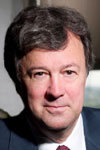 John C. Goodman, president and Kellye Wright Fellow, National Center for Policy Analysis.
John C. Goodman, president and Kellye Wright Fellow, National Center for Policy Analysis.
The President’s address to a Joint Session of Congress could have been a great opportunity to reset the debate on health reform. He could have encouraged Congress to consider health system reforms that will actually work. Instead, the President’s address seemed calculated to bridge the rift between the Blue Dog democrats and left-wing liberals. Watching the President try to convince the Democrats to work together was like being invited to a dinner party where the husband and wife can’t quit bickering. It was a great disappointment to me and only goes to show that Washington is not listening to the voices and opinions of the American people.
The debate and protest during the August town hall meetings were not an anomaly. It was democracy in action real people expressing their opinions and concerns to elected leaders who are supposed to represent them in the legislature. However, instead of bringing those town hall opinions back to Washington as Congress reconvenes this week, it appears the President and Congress are going to be defiant and simply ignore the input they received from the American people.
At this point, the best place for the President to start on health reform is back at the beginning: the presidential campaign. Candidate John McCain’s health plan would have insured just as many people as President Obama aims to insure – and at no additional cost to the Treasury. McCain’s plan would have created new incentives to bring down costs and improve quality and the financing mechanism was more progressive than anything that has been proposed by the Democrats. The President’s speech should have praised these sensible ideas and promised to work with both parties to enact some or all of them. Instead, the President spent valuable time in front of Congress (and network TV) rehashing old argument.
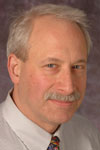
Joel C. Cantor
, director, Center for State Health Policy, and professor of public policy at Rutgers University.
It is no surprise that a centerpiece of the health reform plan that President Obama proposed before the joint session of Congress and the nation would put an end to common and cruel health insurance industry practices. No one wants to be denied coverage for pre-existing conditions or charged unaffordable premiums if they are not among healthiest
Taking the seemingly simple step of banning untoward health insurance practices illustrates why health reform must be so complex. For more than a decade, a handful of states have sought to ban discriminatory insurance industry practices. New Jersey enacted some of the toughest regulations of health insurance sold directly to consumers, in the so-called non-group market. These regulations led to a phenomenon called adverse risk selection, where young and healthy people left the market, driving up premiums for those who remained. Ultimately, these rules were not sustainable.
The experience of New Jersey proves that cracking down on objectionable insurance practices cannot work in isolation. Fortunately, other elements the president’s plan would avoid the fate of these well-intended state strategies. First, the reform would require virtually all Americans to buy coverage. Unlike the New Jersey experience, young and healthy people would have to remain in the risk pool, keeping costs lower for others. Second, people of modest means would receive government subsidies to buy coverage. Since the largest group of uninsured is young and healthy, helping them buy coverage would keep insurance risk pools stable and hold down premiums. Finally, the reform would seek to reduce relentless rise in health care costs, which have driven millions into the ranks of the uninsured in recent years…
In the final analysis, only the federal government can put all the necessary pieces together. In the coming days and weeks we will know whether tonight’s speech was the “game changer” the Administration hopes, but by exercising his ability to explain the complex, the President gave it a good shot.
 Dr. Mark Smith, president and CEO, the California HealthCare Foundation.
Dr. Mark Smith, president and CEO, the California HealthCare Foundation.
“I cannot understand why society has not devised some method by which I and millions like me may be assured in advance that we can meet the costs of illness. After all, I am more likely to be sick than to suffer by fire or be robbed or lose my life. Why can I not be protected where protection is most likely to be needed?” From “A Cure for Doctors’ Bills” by Evans Clark – The Atlantic, October 1930.
Tonight President Obama responded to Clark’s question of nearly 80 years ago, making a broad case for the role of the government in orchestrating that protection. Obama understands that he is not the first, or even second, president to try, but he eloquently and passionately promised to be the last.
The president made a strong moral and philosophical case for expanding coverage and reforming insurance markets. He appealed to both sides of the aisle with a call for low-cost coverage for those with pre-existing conditions and for malpractice reform. He slapped down the recent demagoguery the “partisan spectacle” that has overtaken serious discussion of the issues over the airwaves in recent weeks.
But the feeling that I’m left with is less policy specifics and more a sense of return to the Obama of the campaign aggressively pragmatic, embracing a variety of ideas while articulating his own principles, moving gracefully between sharp rebuke and lyrical oratory, and all with a keen sense of how to talk to the public at large. As a veteran of the Clinton health reform era, I’m acutely aware of how much more everyone is engaged in the debate now: Congress, everyday people, and the president alike.

Beth Kilbreth
, associate research professor at the Muskie School of Public Service at the University of Southern Maine.
I thought the president’s speech did two things very well: it clarified which reform principles have White House commitment and it re-established the debate as political discourse rather than mud wrestling. I was glad to see an explicit commitment to federally mandated insurance reform including guaranteed issue, guaranteed renewal, and banning pre-existing condition exclusions; a pay-or-play requirement for large employers; and an individual mandate.
However, state efforts at health reform, to date, illustrate many of the pitfalls associated with the proposed strategies. Purchasing pools for small employers and the self-employed (now recast as an exchange) have not had much success in reducing insurance costs. More importantly, the specifics on tax credits and other strategies to provide assistance to those who cannot afford coverage could make or break the effort to reach universality. With a family insurance policy averaging about $13,000 a year, the need for some level of subsidization reaches deep into the middle class.
However, the primary purpose of the speech, I believe, was not to lay out details of the reform strategy, but to defuse the anti-reform groups’ campaign based on falsehoods and innuendo. I thought the president’s speech was very effective in this regard.

Dr. Arthur Garson, Jr.
, Executive Vice President and Provost of the University of Virginia and the Robert C. Taylor Professor of Health Science and Public Policy.
The most important issue to address is covering 50 million uninsured people. Anything that gets in the way of that goal should go. The public plan good or bad is getting in the way. The president allowed some room to maneuver and that is vital. The public plan will surely add to the ranks of those covered by “government run” health care; his estimate of 5% joining the public plan seems unlikely. After all, there are more than 16% currently uninsured, some of whom may be covered by Medicaid but many of whom will join the public plan. Is that so bad? Medicare and Medicaid are government-run and have high satisfaction of patients. One problem with those programs, and perhaps the public plan, depending upon the economics, are that physicians and hospitals are paid significantly less than by private insurers — paradoxically reducing access if physicians will not see these patients. A solution is to take the money in these programs and reform of how we pay physicians — more on quality and less on quantity.
The president talked about all of us having helping to produce the needed savings he’s right. We doctors spend too much we spend 3-4 times in Miami what we spend in Oregon with the same results. We can help. But everyone doesn’t need to see a doctor or even a nurse for a cold. For example, a system is being piloted where community health workers can, after a year’s training, with nurse supervision, provide the simplest care for colds, sore throats, etc., allowing physicians more time with the patients who need them. Patients must help: we spend close to $200 billion on obesity. Extreme measures are needed to fight this problem just as the Surgeon General did with smoking.
And insurance companies will be required to cover, with no extra charge, routine checkups and preventive care, like mammograms and colonoscopies because there’s no reason we shouldn’t be catching diseases like breast cancer and colon cancer before they get worse. That makes sense, it saves money, and it saves lives. The money is just not there. Prevention is absolutely the right thing to do it saves lives but does not save money; 81% of preventive care costs money and 19% saves money. Do it but don’t look for the money to pay for reform.

Carol H. Steckel
, commissioner, Alabama Medicaid Agency.
The president had some powerful messages in his speech outlining the need for changes to our current health care system. However, there were very few details. For those of us that carefully manage the scarce resources we have at the state level, it was extremely frustrating to hear that the changes proposed in healthcare reform will be paid for through fraud and waste in our current government programs Medicare and Medicaid.
Speaking for the Medicaid programs throughout the country, we manage our programs in such a way as to improve quality and lower costs. But in many cases, federal regulations and legislation impede our efforts to accomplish these goals as effectively as possible. In addition, absent the details in the president’s speech and reading the various proposals in Congress, expecting states to provide any additional funding for federal mandates is unacceptable and unsustainable during these difficult and challenging economic times. An old Southern saying, “the devil is in the detail,” rings very true for health care reform.
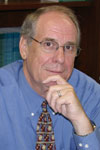
R. Paul Duncan
, director of the Center for Medicaid and the Uninsured at the University of Florida, Gainesville.
On the speech itself:
– Powerful, eloquent, effective and clear.
– Emphasized building upon what currently works.
– The summary section on protecting what people currently have and like, providing coverage for those without, and achieving cost saving with quality improvement for everyone was especially well crafted.
– Did a great job of unequivocally rejecting the wild and wacko claims, but trying to be responsive to honest concerns.
– Called the moral question clearly, especially in the very moving conclusion.
On the proposal/plan:
– Although important and valuable, the reforms proposed are not radical and would not really change very much about the dysfunctional elements of the current system’s emphasis on highly redundant, uncoordinated processes.
– Not much about information technology.
– Not much about overuse.
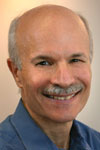
E. Richard Brown
, director, UCLA Center for Health Policy Research, and professor in the School of Public Health.
In his speech to the joint session of the Congress, President Obama has taken the first step to make clear his position on health care reform, but he clearly left some key issues unresolved. He will have to act forcefully in the days and weeks ahead to make clear where he stands on those issues, and to demonstrate that he really intends to make his passionate speech yield effective policy
Many of the issues he spoke to represent areas of broad bipartisan agreement: insurance market reforms that would prohibit any insurance company from denying coverage to someone because of their health; establishing an insurance exchange to offer individuals and small firms health insurance on terms that are now open only to large public and private employer groups; and offering tax credits to small firms that cover their workers.
He also spoke to some issues that have bipartisan support but also strong opposition: requiring individuals to buy health insurance coverage, with exemptions for individuals who can make a case for hardship; and requiring large employers to provide health insurance to their workers or pay into a national fund that would help subsidize coverage
Although he made a strong case for including a public health plan, the president also left open the door to those who have opposed a publicly run health plan. He said he would be open to discussing including a “trigger” that would have to be met before implementing a publicly run health plan. A trigger, however, may be so vaguely defined such as noncompetitive markets or coverage that is insufficiently affordable as to preclude ever having a public health plan. And he offered the possibility of substituting a “cooperative” plan for a public health plan, something that no one in the Congress has credibly characterized.
Thus, the president was forceful in tone, passionate in his defense of reform and some key elements. But at the end of his speech, he left us just as unclear about his bottom line on some key issues in health care reform as we were before his speech.
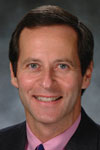
Dr. David Nash
, founding dean of the Jefferson School of Population Health at Thomas Jefferson University in Philadelphia
In a stirring and forceful speech, President Obama delivered a bipartisan centrist message that appealed to our character as a nation. Noting that we cannot fix the economy without fixing health care and promising not to increase the deficit he inherited, the president called for mandated insurance coverage for all Americans. Recognizing that the status quo is untenable, he called for the creation of an insurance exchange and for the so called “public option” to be created whereby those without insurance currently, could get coverage —-noting that it might take up to four years to implement. He also explicitly linked our need to reduce waste, improve quality, reduce hospital acquired infections and practice better team-based care to the set of tools needed as part of the solution.
From a policy perspective the speech clarified his own views and reinforced the notion that we have to build on the existing system. He did not disconnect insurance from the place of employment, he did not call for a major Medicare overhaul and he did not create major new federal bureaucracies to make his plan operational. Much more work needs to be done but I believe he effectively re-set the clock, re-set the arguments, and crafted a political umbrella under which lawmakers can now operate together.






